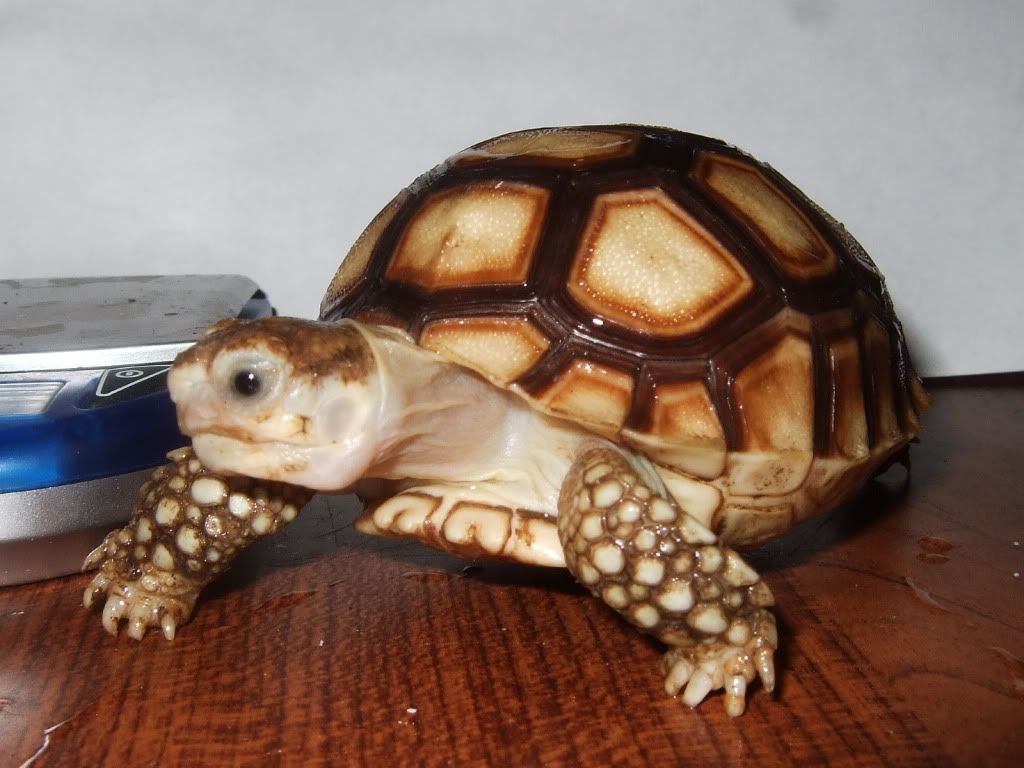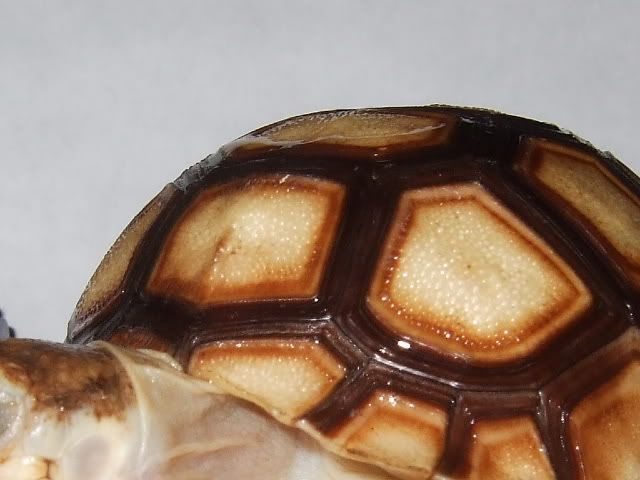Good evening to all members.
I would just like to ask some questions with regards
to pyramiding if I may?
I adopted these tortoises from a friend of mine.
They're both 9cm of length, very friendly, very tame
and very very beautiful if I might add.
However, they have a slight pyramiding.
I was told that if they're small, it can still be cured as they grow.
Here's what they look like now;


I was wondering if I could seek assistance of all
the professionals here on how to cure this if there's
a way at all.
I've been trying to find information here and there
and have been advices numerous solutions to which
I don't even know WILL work or not.
To summarize, they told me that
- Their space have to be 10 times of their size.
- They have to be given water at all times.
- Don't over-feed.
- They have to had access to UV Ray or just bathe them under the sun once a day.
- Don't feed them mazuri as it causes pyramiding.
In any case, the setup I have at the moment is this;
(Only during night-time when they sleep)
(In the morning to evening, I let them roam around the apartment)

And the food I'm giving them is this;

The UV light is ON during 9am -> 9pm
I've also placed thermometer and hydrometer to measure the temperature and humidity.
Thermometer indicates on average 28 - 31 degrees celcius
Hydrometer indicates on average 50 - 70 percent
Water is always changed EVERYDAY.
Feeding only occurs once in the morning.
Portion of food can be seen in the setup every morning.
Please let me know if I am doing anything wrong~
I would just like to ask some questions with regards
to pyramiding if I may?
I adopted these tortoises from a friend of mine.
They're both 9cm of length, very friendly, very tame
and very very beautiful if I might add.
However, they have a slight pyramiding.
I was told that if they're small, it can still be cured as they grow.
Here's what they look like now;


I was wondering if I could seek assistance of all
the professionals here on how to cure this if there's
a way at all.
I've been trying to find information here and there
and have been advices numerous solutions to which
I don't even know WILL work or not.
To summarize, they told me that
- Their space have to be 10 times of their size.
- They have to be given water at all times.
- Don't over-feed.
- They have to had access to UV Ray or just bathe them under the sun once a day.
- Don't feed them mazuri as it causes pyramiding.
In any case, the setup I have at the moment is this;
(Only during night-time when they sleep)
(In the morning to evening, I let them roam around the apartment)

And the food I'm giving them is this;

The UV light is ON during 9am -> 9pm
I've also placed thermometer and hydrometer to measure the temperature and humidity.
Thermometer indicates on average 28 - 31 degrees celcius
Hydrometer indicates on average 50 - 70 percent
Water is always changed EVERYDAY.
Feeding only occurs once in the morning.
Portion of food can be seen in the setup every morning.
Please let me know if I am doing anything wrong~





